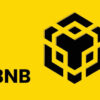
As the decentralized finance (DeFi) sector rapidly evolves, Polkadot (DOT) has emerged as a transformative force in the blockchain ecosystem. Polkadot’s unique architecture and features are reshaping the landscape of DeFi, offering innovative solutions that enhance scalability, interoperability, and security. This article explores Polkadot’s impact on DeFi, highlighting how it is driving advancements and influencing the future of financial services.
Understanding Decentralized Finance (DeFi)
Decentralized Finance (DeFi) refers to a broad range of financial applications and services built on blockchain technology, aimed at creating a more open, accessible, and transparent financial system. DeFi platforms operate without traditional intermediaries, using smart contracts to automate and manage financial transactions. Key components of DeFi include:
- Lending and Borrowing: Platforms that enable users to lend and borrow assets without intermediaries.
- Decentralized Exchanges (DEXs): Platforms for trading cryptocurrencies directly with other users.
- Stablecoins: Cryptocurrencies designed to maintain a stable value relative to a fiat currency.
- Yield Farming: Strategies to earn rewards by providing liquidity to DeFi protocols.
Polkadot’s Contributions to DeFi
Polkadot’s innovative technology and design principles are making a significant impact on the DeFi sector. Here’s how Polkadot is influencing the future of decentralized finance:
1. Enhanced Interoperability
One of Polkadot’s core features is its ability to connect multiple blockchains through its Relay Chain and parachains. This interoperability is crucial for DeFi applications, which often require seamless interaction with various blockchain networks.
- Cross-Chain Transactions: Polkadot facilitates cross-chain transactions, allowing DeFi platforms to integrate with multiple blockchains and access a wider range of assets.
- Bridges to Other Networks: Polkadot’s bridge infrastructure enables connections with major blockchains like Ethereum and Bitcoin, expanding the reach and functionality of DeFi applications.
2. Scalability and Performance
Polkadot’s sharded architecture allows for the parallel processing of transactions across multiple parachains, addressing the scalability challenges faced by many DeFi platforms.
- Parallel Processing: By distributing transaction processing across several parachains, Polkadot increases throughput and reduces latency, supporting high-performance DeFi applications.
- Customizable Parachains: DeFi projects can leverage Polkadot’s parachains to create customized solutions tailored to specific use cases, optimizing performance and efficiency.
3. Security and Shared Security Model
Polkadot’s shared security model ensures that all parachains benefit from the security provided by the Relay Chain. This robust security framework is essential for maintaining the integrity and safety of DeFi applications.
- Unified Security: Parachains leverage the Relay Chain’s security, reducing the risk associated with isolated blockchains and enhancing the overall security of DeFi platforms.
- Validator Network: Validators on the Relay Chain maintain network consensus and security, providing a high level of protection for DeFi transactions and smart contracts.
4. Decentralized Governance
Polkadot’s on-chain governance model allows DOT holders to participate in the decision-making process, influencing the development and evolution of the network. This governance approach aligns with the principles of DeFi, promoting transparency and community involvement.
- Community Participation: DOT holders can propose and vote on protocol upgrades, changes, and new features, ensuring that the network evolves in a way that benefits the DeFi ecosystem.
- Adaptive Development: Polkadot’s governance model enables the network to adapt to emerging trends and challenges, supporting the continuous growth and innovation of DeFi applications.
5. Support for Innovative DeFi Solutions
Polkadot’s flexible and adaptable framework supports the development of a diverse range of DeFi solutions, from lending and borrowing platforms to decentralized exchanges and yield farming protocols.
- Custom DeFi Parachains: Developers can build specialized parachains tailored to DeFi use cases, leveraging Polkadot’s technology to create innovative and efficient financial solutions.
- Interoperable DeFi Protocols: Polkadot’s interoperability features enable DeFi protocols to interact with other blockchain networks, expanding their functionality and user base.
Case Studies and Examples
Several DeFi projects are already leveraging Polkadot’s technology to create impactful solutions:
1. Acala
Acala is a DeFi platform built on Polkadot that offers a suite of financial services, including a decentralized stablecoin and a multi-collateralized lending platform. By utilizing Polkadot’s parachains and interoperability features, Acala is providing users with a seamless and efficient DeFi experience.
2. Moonbeam
Moonbeam is a smart contract platform on Polkadot that supports the development of DeFi applications compatible with Ethereum’s ecosystem. Moonbeam’s integration with Polkadot enables DeFi projects to leverage both Ethereum and Polkadot’s capabilities, enhancing their reach and functionality.
3. Phala Network
Phala Network provides a privacy-focused DeFi platform on Polkadot, offering secure and confidential smart contract execution. By combining Polkadot’s scalability with advanced privacy features, Phala Network addresses the need for secure and private DeFi solutions.
Future Prospects
As Polkadot continues to evolve, its impact on the DeFi sector is expected to grow. Key future developments to watch include:
- Increased Parachain Adoption: The addition of new parachains will expand Polkadot’s DeFi ecosystem, introducing innovative solutions and services.
- Enhanced Cross-Chain Functionality: Continued advancements in cross-chain messaging and bridge integrations will further enhance Polkadot’s interoperability with other blockchain networks.
- New DeFi Innovations: As developers explore Polkadot’s capabilities, new and innovative DeFi applications are likely to emerge, driving the sector forward.
Conclusion
Polkadot’s unique technology and design are having a profound impact on the decentralized finance (DeFi) sector. By enhancing interoperability, scalability, and security, Polkadot is providing a robust foundation for the development of innovative DeFi solutions. As the network continues to grow and evolve, its contributions to DeFi will shape the future of financial services, driving advancements and expanding opportunities in the decentralized economy.
For investors, developers, and enthusiasts, staying informed about Polkadot’s developments and its impact on DeFi is essential for navigating the evolving landscape of decentralized finance.










